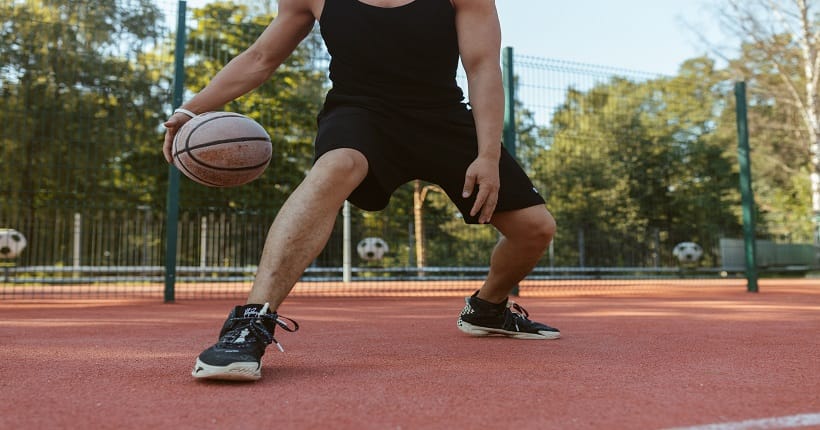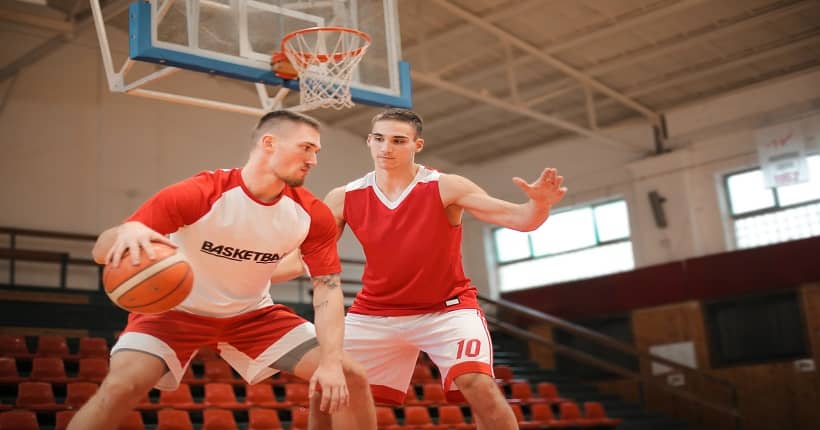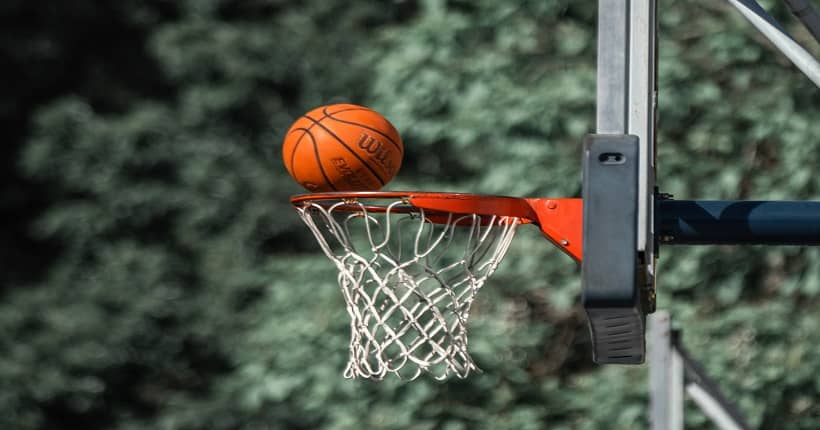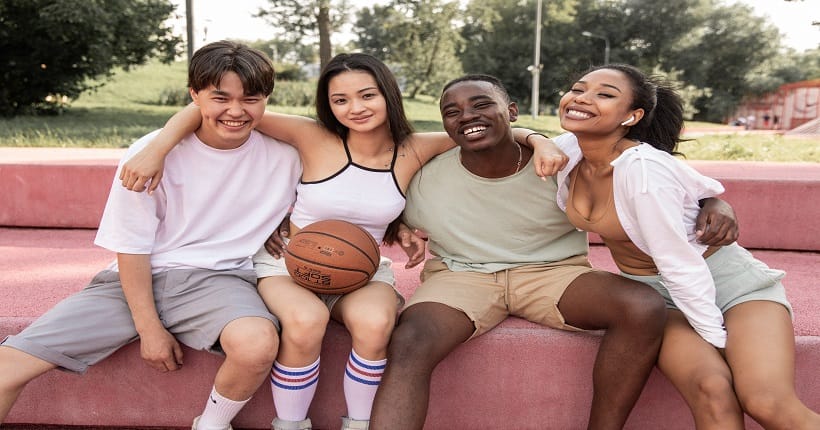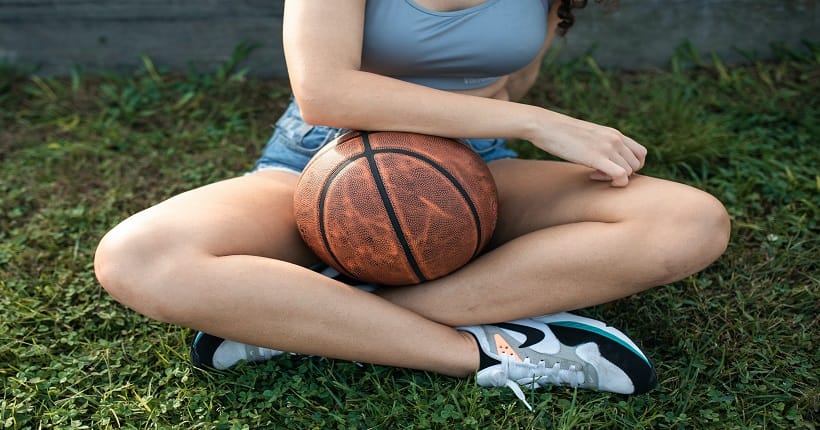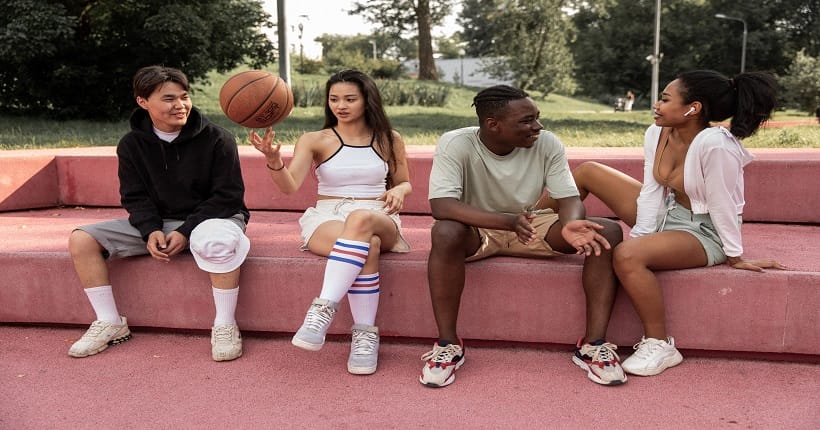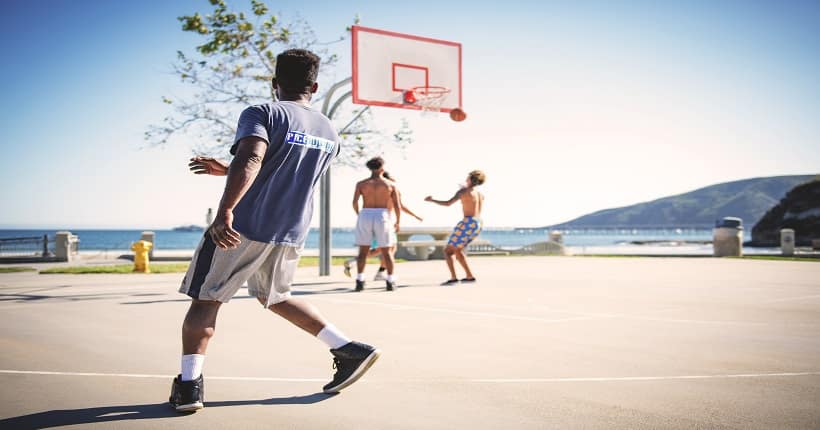Are Basketball Shoes Supposed To Be Tight?
Basketball shoes are not supposed to be tight as it can restrict movement and cause discomfort, affecting performance. If you want to excel on the basketball court, wearing the right pair of shoes is crucial.
The right fit can make a significant difference in your game, enhancing your agility, stability, and overall comfort while playing. When it comes to basketball shoes, many people assume that a tight fit is necessary for optimal performance. However, this is not the case.
In fact, basketball shoes should not be tight. Wearing tight shoes can restrict movement, leading to discomfort, blisters, and even injuries. We will discuss the importance of proper shoe fit in basketball and provide insights on how to find the perfect fit for you. So, keep reading to make sure you’re not compromising on your game by wearing tight basketball shoes.
How The Fit Of Basketball Shoes Can Impact Performance
An Overview Of The Importance Of Proper Fit
When it comes to basketball shoes, proper fit is key to ensuring optimal performance on the court. The right fit not only enhances comfort but also plays a crucial role in foot stability, support, and overall performance. Wearing basketball shoes that are too tight or too loose can have a negative impact on your game, causing discomfort, decreasing agility, and increasing the risk of injury.
So, what exactly does it mean for basketball shoes to fit properly? Proper fit means that the shoes snugly wrap around your feet, providing a secure and comfortable feel without being overly constricting. It allows for natural movement and flexibility, while also offering the necessary support and stability for quick cuts, jumps, and pivots.
The Relationship Between Fit And Foot Stability
The fit of basketball shoes is directly related to foot stability, which is crucial for maintaining balance and executing a wide range of movements on the court. A well-fitted shoe helps prevent excessive foot sliding inside the shoe, reducing the risk of ankle rolls and sprains. It keeps your foot in proper alignment, allowing you to make sharp turns, abrupt stops, and explosive jumps without compromising stability.
When basketball shoes are too loose, the lack of stability can result in the foot shifting within the shoe during sudden movements, impacting your ability to maintain balance and control. On the other hand, if the shoes are overly tight, they can restrict natural foot motion and limit the range of movement, affecting your agility and responsiveness on the court.
The Role Of Comfort In Performance
Comfort is an integral part of performance when it comes to basketball shoes. Wearing shoes that provide a comfortable fit allows you to focus solely on your game without distractions or discomfort. It prevents distractions caused by foot pain, blisters, or pressure points, enabling you to move freely and confidently during play.
Moreover, comfortable shoes also contribute to reducing fatigue during extended periods of play. When your feet are properly supported and cushioned, it minimizes the strain on your muscles and joints, allowing you to sustain energy and perform at your best throughout the game.
Remember, the right fit and utmost comfort of your basketball shoes can make a significant difference in your performance on the court. When choosing basketball shoes, consider factors such as your foot shape, size, and personal preferences, and ensure they fit properly to reap the benefits of enhanced foot stability, support, and overall performance.
The Concept Of Shoe Tightness
When it comes to basketball shoes, achieving the perfect fit is essential for optimal performance on the court. One key aspect of finding the right fit is understanding the concept of shoe tightness. How tight should basketball shoes be? While there is no one-size-fits-all answer to this question, determining the ideal tightness involves considering various factors such as personal preference, play style, and comfort. Exploring the different levels of tightness and understanding the factors to consider can help you find the perfect balance between support and flexibility.
Exploring The Different Levels Of Tightness
When choosing basketball shoes, you may notice that some players prefer a tighter fit while others prefer a looser fit. Understanding the different levels of tightness can help you make an informed decision based on your individual needs. Here are a few common levels of tightness:
- Snug Fit: A snug fit offers maximum support and stability by hugging your feet closely. This level of tightness is suitable for players who prioritize ankle support and want a secure feeling on the court.
- Moderate Fit: A moderate fit strikes a balance between support and flexibility. It provides a secure fit without feeling overly restrictive. Players who value a balance between agility and stability often opt for this level of tightness.
- Relaxed Fit: A relaxed fit allows for more freedom of movement and breathability. It offers a comfortable feel without sacrificing support entirely. Players who prioritize flexibility and explosive movements might prefer a relaxed fit.
Factors To Consider When Determining The Ideal Tightness
While the level of tightness ultimately depends on personal preference, there are several factors to consider when determining the ideal fit for your basketball shoes. These factors include:
- Ankle Support: Players with a history of ankle injuries may opt for a tighter fit to minimize the risk of reinjury.
- Play Style: Different play styles require different levels of support and flexibility. Power players who engage in physical contact may benefit from a tighter fit, whereas shooters and quick guards may prefer a looser fit for increased agility.
- Foot Shape: Individuals with narrow or wide feet may require specific shoe models or adjustments in tightness to ensure comfort and support.
- Comfort: Ultimately, comfort plays a significant role in shoe selection. Shoes that are too tight can lead to discomfort and even pain during extended periods of wear.
Be Mindful Of Personal Preference And Play Style
No two players are exactly alike, and understanding personal preference and play style is crucial in determining the ideal tightness of basketball shoes. While some individuals may prioritize maximum support and a tight fit, others may value flexibility and freedom of movement. Experimenting with different levels of tightness and considering individual needs can help you find the perfect balance between comfort, support, and performance on the basketball court.
Potential Drawbacks Of Wearing Tight Basketball Shoes
When it comes to basketball, having the right pair of shoes is crucial for performance and injury prevention. While some athletes prefer a snug fit for their basketball shoes, there are potential drawbacks to wearing tight shoes that are worth considering. In this article, we’ll explore the impact of restricted blood flow, the increased risk of foot and ankle injuries, and the effect on natural foot flexibility.
The Impact Of Restricted Blood Flow
One of the potential drawbacks of wearing tight basketball shoes is the impact on blood circulation. When shoes are too tight, they can restrict blood flow to the feet. This restriction can lead to discomfort, numbness, and even cramps. Restricted blood flow can also hinder the delivery of oxygen and nutrients to the muscles, which is essential for optimal performance on the court.
Tight shoes can especially affect athletes with underlying circulation issues or conditions like diabetes. They need to be particularly cautious about wearing shoes that may further compromise blood flow to their feet. Maintaining proper blood circulation is important not just for comfort but also for preventing foot complications.
Increased Risk Of Foot And Ankle Injuries
Another potential drawback of wearing tight basketball shoes is an increased risk of foot and ankle injuries. Shoes that are too tight can limit the natural range of motion of the foot, which may disrupt the body’s ability to absorb impact and distribute forces properly. This limitation in movement can potentially increase the chances of sprains, strains, and other injuries during quick cuts, jumps, and landings on the basketball court.
Moreover, tight shoes can cause excessive pressure on certain areas of the foot, including the toes and the arch. This heightened pressure can result in blisters, corns, calluses, and even ingrown toenails. These conditions can be painful and may impact an athlete’s performance on the court.
The Effect On Natural Foot Flexibility
Wearing tight basketball shoes can also affect the natural flexibility of the foot. Our feet have a complex structure of muscles, tendons, and ligaments that work together to provide balance, stability, and agility. When shoes are too tight, they can restrict the natural movement of these structures, potentially leading to a decrease in foot flexibility over time.
This decrease in foot flexibility can impact an athlete’s ability to perform quick and explosive movements, as well as affect their overall comfort during prolonged periods of play. It is essential to prioritize maintaining the natural flexibility of the foot to prevent any long-term limitations in performance or potential foot conditions.
While some athletes may prefer a tight fit for their basketball shoes, it is important to be aware of the potential drawbacks. The impact of restricted blood flow, the increased risk of foot and ankle injuries, and the effect on natural foot flexibility are important factors to consider when choosing the right basketball shoe. Finding the balance between a snug fit and allowing for proper blood circulation, foot movement, and flexibility is key to optimizing performance and minimizing the risk of injuries on the basketball court.
Finding The Perfect Fit: Tips And Strategies
Choosing the right basketball shoes may seem like a simple task, but finding the perfect fit can greatly impact your performance on the court. When it comes to basketball shoes, should they be tight or loose? The answer lies in finding a sweet spot between too tight and too loose. In this section, we’ll explore some valuable tips and strategies to help you in your quest for the perfect fit.
Choosing The Right Size And Width
One of the first steps in finding the perfect fit for your basketball shoes is selecting the right size and width. Ill-fitting shoes can cause discomfort and increase the risk of injuries. To determine the correct shoe size, measure the length and width of your feet using a measuring tape. Remember, each brand may have slightly different sizing, so referring to the manufacturer’s size chart is important. When selecting the width, opt for shoes that provide enough space for your feet to move naturally without being too loose or constrictive.
Trying On Shoes With Sports-specific Socks
When trying on basketball shoes, it’s crucial to wear sports-specific socks that you would typically wear during games or practice sessions. Sports socks are designed to provide cushioning, support, and moisture-wicking properties, all of which can impact the overall fit of the shoe. Wearing the same type of socks during the fitting process allows you to assess how the shoes feel in a realistic basketball environment, ensuring a more accurate fit.
Allowing For Break-in Time
Remember that new basketball shoes often require some break-in time. It’s not uncommon for them to feel slightly tight initially. Give yourself ample time to break-in the shoes before making any judgments on their fit. Wearing them around the house or during light practice sessions can help the shoes adapt to your feet and provide a more comfortable fit over time.
Seeking Professional Advice If Necessary
If you’re struggling to find the perfect fit or experiencing discomfort even after the break-in period, it may be wise to seek professional advice. Visit a specialty sports shoe store where experienced staff can assist you in finding the right basketball shoes for your feet. They can analyze your foot structure, gait, and provide recommendations based on your specific needs and preferences. Don’t hesitate to ask for expert guidance, as it can make a significant difference in your overall basketball experience.
Maintaining The Ideal Fit For Basketball Shoes
When it comes to playing basketball, having the right pair of shoes is essential. Not only do basketball shoes provide support and stability on the court, but they also contribute to your overall performance and prevent injuries. One important factor to consider when wearing basketball shoes is the fit. Is it better for them to be tight or loose? In this article, we will delve into the topic of maintaining the ideal fit for basketball shoes, ensuring that you get the most comfort and support out of your footwear.
Regularly Assessing Fit And Comfort
The first step in maintaining the ideal fit for your basketball shoes is regularly assessing their fit and comfort. Your shoes should fit snugly, but not be uncomfortably tight. It is crucial for you to be able to move your toes and have some wiggle room, as this will prevent unnecessary strain on your feet during quick movements on the court. If your shoes feel overly tight or cause discomfort, it may be an indication that they are not the right size for you.
To assess the fit of your basketball shoes, here are a few steps you can follow:
- Stand up wearing the shoes and ensure that there is about half an inch of space between your longest toe and the front of the shoe.
- Walk around and perform a few basketball-specific movements to see if the shoes provide enough support and flexibility without causing any pain or discomfort.
- Pay attention to any areas of pressure or tightness. If you feel any discomfort, it may be a sign that the shoes are either too tight or not the right fit for your foot shape.
Taking Proper Care Of Shoes To Preserve Fit
Another key aspect of maintaining the ideal fit for your basketball shoes is taking proper care of them. Over time, shoes can stretch or lose their shape, affecting the fit and performance. To preserve the fit of your shoes, follow these care tips:
- Clean your shoes regularly, removing any dirt or debris that can affect the fit and performance.
- Avoid excessively exposing your shoes to water or extreme heat, as this can cause them to lose their shape.
- Use shoe trees or stuff the shoes with newspaper when not in use to help them maintain their shape.
- Store your basketball shoes in a cool, dry place away from direct sunlight and extreme temperatures.
- Rotate your basketball shoes with other pairs to allow them to rest and regain their shape.
Knowing When It’s Time For A New Pair
Despite your best efforts to maintain the ideal fit, there will come a time when your basketball shoes need to be replaced. Over time, the cushioning and support in the shoes will wear down, diminishing their effectiveness and increasing the risk of injury. Recognizing when it’s time for a new pair of basketball shoes is crucial for your performance and overall foot health. Here are a few signs that indicate it’s time for a new pair:
| Sign | Explanation |
|---|---|
| Worn-Out Tread | If the traction on the sole of your basketball shoes is significantly worn down, it can affect your ability to make quick cuts and movements on the court. |
| Lack of Support | If you notice that your shoes no longer provide the same level of support as before or if they feel loose, it’s a sign that the cushioning and structural integrity have deteriorated. |
| Discomfort or Pain | If you experience persistent discomfort, pain, or increased fatigue while wearing your basketball shoes, it could indicate that they no longer provide the necessary support and cushioning your feet need. |
By regularly assessing the fit and comfort of your basketball shoes, taking proper care of them, and knowing when it’s time for a new pair, you can ensure that you maintain the ideal fit for optimal performance on the basketball court. Remember, the right fit is crucial for both comfort and preventing injuries, so don’t underestimate the importance of finding shoes that perfectly suit your feet.

Credit: www.bridgepartnersllc.com
Frequently Asked Questions On Are Basketball Shoes Supposed To Be Tight?
How Tight Should Basketball Shoes Feel?
Basketball shoes should fit snugly but not too tight. A tight fit keeps your feet secure while playing, preventing sliding or slipping. The shoes should also provide enough space for your toes to move comfortably. Proper fitting ensures better performance and reduces the risk of foot injuries.
How Do You Break In Tight Basketball Shoes?
Breaking in tight basketball shoes can be done by wearing them around the house before hitting the court. Another method is to use a shoe stretcher or apply heat with a hairdryer to loosen the material. Remember to wear thick socks and gradually increase the amount of time spent wearing the shoes to prevent discomfort.
Why Are Nike Basketball Shoes So Tight?
Nike basketball shoes are designed to provide a secure fit and maximum support during intense gameplay. The snugness may be due to the materials used and the shoe’s performance-oriented construction, ensuring precise movements and reducing the risk of injury.
Are Kyries Supposed To Be Tight?
Yes, kyries are supposed to be tight.
Are Basketball Shoes Supposed To Be Tight?
Basketball shoes are designed to fit snugly for better stability and support during quick movements on the court.
How Should Basketball Shoes Fit?
Basketball shoes should have a snug fit around the heel and midfoot, with enough space in the toe box to wiggle your toes comfortably.
Conclusion
Basketball shoes are designed to provide a snug fit, ensuring stability and control during intense athletic movements. While some players prefer a tighter fit to maximize support, it’s essential to find the right balance between comfort and security. Remember, individual preferences may vary, so take the time to try different sizes and styles to find what works best for you.
Properly fitting basketball shoes will enhance your performance and reduce the risk of injury on the court. So, make sure your shoes are snug, but not overly tight.

